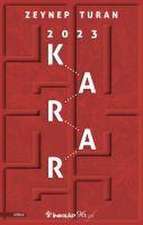Hard Facts About Soft Machines: The Ergonomics Of Seating
Editat de Rani Lueder, Kageyu Noroen Limba Engleză Hardback – 23 noi 1994
| Toate formatele și edițiile | Preț | Express |
|---|---|---|
| Paperback (1) | 504.63 lei 43-57 zile | |
| CRC Press – 16 sep 2019 | 504.63 lei 43-57 zile | |
| Hardback (1) | 1806.30 lei 43-57 zile | |
| CRC Press – 23 noi 1994 | 1806.30 lei 43-57 zile |
Preț: 1806.30 lei
Preț vechi: 2202.81 lei
-18% Nou
Puncte Express: 2709
Preț estimativ în valută:
345.74€ • 375.68$ • 290.61£
345.74€ • 375.68$ • 290.61£
Carte tipărită la comandă
Livrare economică 21 aprilie-05 mai
Preluare comenzi: 021 569.72.76
Specificații
ISBN-13: 9780850668025
ISBN-10: 0850668026
Pagini: 457
Dimensiuni: 156 x 234 x 31 mm
Greutate: 0.93 kg
Ediția:1
Editura: CRC Press
Colecția CRC Press
ISBN-10: 0850668026
Pagini: 457
Dimensiuni: 156 x 234 x 31 mm
Greutate: 0.93 kg
Ediția:1
Editura: CRC Press
Colecția CRC Press
Public țintă
ProfessionalCuprins
Part 1 Seating And Health: A Continuous Passive Motion Backrest For Low backpain, Steven M. Reinecke et al; back problems caused by traditional work chairs and how to reduce the problem, A.C. Mandal; effect of belt support chair in preventing Lumbago and maintaining posture, Dr Morooka. Part 2 Seating and posture: study on posture as nonverbal communication, D. Haruki; our backs are all shaped differently, yet backrests are designed the same - does it really matter?, Rani Lueder; actual labour conditions of female workers and development of chairs for pregnant female workers in Japan, Ms Kajiyama. Part 3 Children and school chairs: video demonstration of Danish school chairs, A.C. Mandal; accommodation problems of chairs and desks to students in elementary and junior high schools in Korea and their solution, Professor Cho; accommodation problems of chairs and desks to students in elementary and junior high schools in Japan and their solution, Ms Salto and Ms Hibaru. Part 4 Chairs and ergonomics: functional factors in forward-tilting office chairs, Shiraishi Okamura and Dr Ueno; development of wheelchairs for physically handicapped people, D. Koga. Part 5 Chairs and office: three propositions about ergonomics seating which seem correct but are actually doubtful, Marvin J. Dainoff; application of simulation model for designing VDT workstations, Dr Noro and Mr Hirasawa; impact of office automation on seating design for the nineties, Leonard B. Kruk.
Descriere
This book brings together researchers in ergonomics and posture with industrial designers, to review and assess the current state of chair design, with implications for cultural, behavioural and occupational aspects of health. The contributions are a significant step in the ergonomics of seating and should lead to a better understanding of the mechanics, dynamics and effects of seating on the sitter. They point to ways in which seats might become easier to use and adjust, offering both comfort and postural support without compromising freedom of movement; and in the not too distant future, the "intelligent chair" will "remember" the sitter's preferences.























